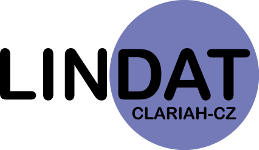Austerity Measures During the Protectorate of Bohemia and Moravia
The online collection AUSTERITY MEASURES DURING THE PROTECTORATE OF BOHEMIA AND MORAVIA consists of 54 newsreel segments from the Český zvukový týdeník Aktualita (Czech Aktualita Sound Newsreel) and the weekly UFA žurnál (UFA Journal Newsreel) produced in the years 1939-1945. These segments report on the bleak economic situation in the Protectorate during the Second World War, the necessity for everyday austerity, and the search for alternative systems in all spheres of economic life.
As a result of the Munich Agreement in October 1938, Czechoslovakia ceded more than a third of its industrial enterprises to Germany. After the annexation of the republic and the establishment of the Protectorate of Bohemia and Moravia in March 1939, the remaining Czech industry also became a part of the German economy. In preparation for the war, the occupation regime introduced a series of measures that were meant to ensure a rapid transformation of the country’s market economy into the Reich’s system of “wartime-controlled economy”. As early as March 1939, the government forcefully took over the management of all Czech enterprises and put German administrators in charge. The Czech economy played a key role in subsidising Germany’s war aggression. That meant producing weapons, ammunition, and other military materials while also distributing food and consumer goods for the Wehrmacht on war fronts.
The effort to maximize the Czech lands’ economic potential for war purposes also dramatically affected the agricultural sphere. Czech farmers came under the newly created institution of forced deliveries, i.e. they were obligated to hand over all production, except for subsistence quotas, to Nazi Germany. The introduction of the food rationing system represented a significant intervention in the daily life of the protectorate’s citizens. Food ration stamps were the only means to purchase any available food officially. The sale of coffee, cocoa, chocolate, and tropical fruit was banned altogether and these products became articles on the black market. The search for alternative sources of nourishment and the attempts to replace scarce commodities are captured in newsreel segments featuring the production of artificial honey, ‘Sladomed’ (malt syrup), chestnut flour, oatmeal, chicory-based coffee substitute, and even the collection and processing of kitchen waste. The protectorate’s citizens responded to the shortage of grain and vegetables by turning public parks into gardens and vegetable patches. The austerity measures understandably also affected public and factory canteens. The catastrophic situation in agriculture created problems for the maintenance of livestock farms; this can be seen in the film footage devoted to feed management or the production of feed from molasses.
What also encroached on the everyday life of the protectorate’s citizens were the problems in the clothing and shoe industry, which was dealing with a shortage of textiles, wool, and leather, and an implementation of ration stamps for clothing and shoes (so-called ‘šatenky’). The situation was further complicated by the shortage of clothing for German soldiers caused by the surprisingly harsh winter on the Eastern Front. The daily reality of war is documented in the film footage of old clothes and headgear re-stitching, recycling of various waste materials, textile scraps and leather offcuts, and rabbit hide processing. Collections of second-hand clothes and shoes for workers and others in need were organised all throughout the protectorate. The regularly recurring event ‘Winter Relief’ (Winterhilfe) for the Wehrmacht held a collection of winter clothing and blankets for German soldiers. Alternative solutions were also sought in all other sectors. Several newsreel segments therefore report on collections of secondary raw materials, sorting of waste, the processing of weeds and straw, making of jute and ropes from old paper, and production of suitcases from veneer waste or makeshift furniture for bombed-out households. Even recycling of old film rolls was featured.
A reality of the time was the critical state of energy and fuel availability. This concerned especially petrol and diesel, primarily used to supply the German war machinery on the fronts. The situation was the subject of several newsreel segments reporting on the need to resume charcoal production in charcoal piles, the extraction and use of peat as a motor fuel, the introduction of gas generators for ship propulsion, and the adaptation of engines for alternative sources, mainly wood gas. Maximum attention was paid to saving electricity and fuel in both public and private spheres, as is visible in the footage of training courses for chimney sweepers, courses for stokers organized in central heating boiler rooms, and an instructing course on kitchen stove maintenance.
The period film coverage included in the collection ‘Austerity Measures during the Protectorate of Bohemia and Moravia’ is not only a record of the bleak economic reality of the Second World War and evidence of the critical state of wartime production and supply but also a relevant showcase of Nazi propaganda mechanisms and rhetoric.
Poslední příspěvky
-
clip
 (Národní filmový archiv / 1943)Tento záznam obsahuje 2 souborů (953.31 MB).Publicly Available
(Národní filmový archiv / 1943)Tento záznam obsahuje 2 souborů (953.31 MB).Publicly Available



-
-
clip
 (Národní filmový archiv / 1945)Tento záznam obsahuje 2 souborů (1.21 GB).Publicly Available
(Národní filmový archiv / 1945)Tento záznam obsahuje 2 souborů (1.21 GB).Publicly Available



-
-
clip
 (Národní filmový archiv / 1945)Tento záznam obsahuje 2 souborů (1.45 GB).Publicly Available
(Národní filmový archiv / 1945)Tento záznam obsahuje 2 souborů (1.45 GB).Publicly Available



-
-
clip
 (Národní filmový archiv / 1942)Tento záznam obsahuje 2 souborů (2.56 GB).Publicly Available
(Národní filmový archiv / 1942)Tento záznam obsahuje 2 souborů (2.56 GB).Publicly Available



-
-
clip
 (Národní filmový archiv / 1945)Tento záznam obsahuje 2 souborů (4.97 GB).Publicly Available
(Národní filmový archiv / 1945)Tento záznam obsahuje 2 souborů (4.97 GB).Publicly Available



-

